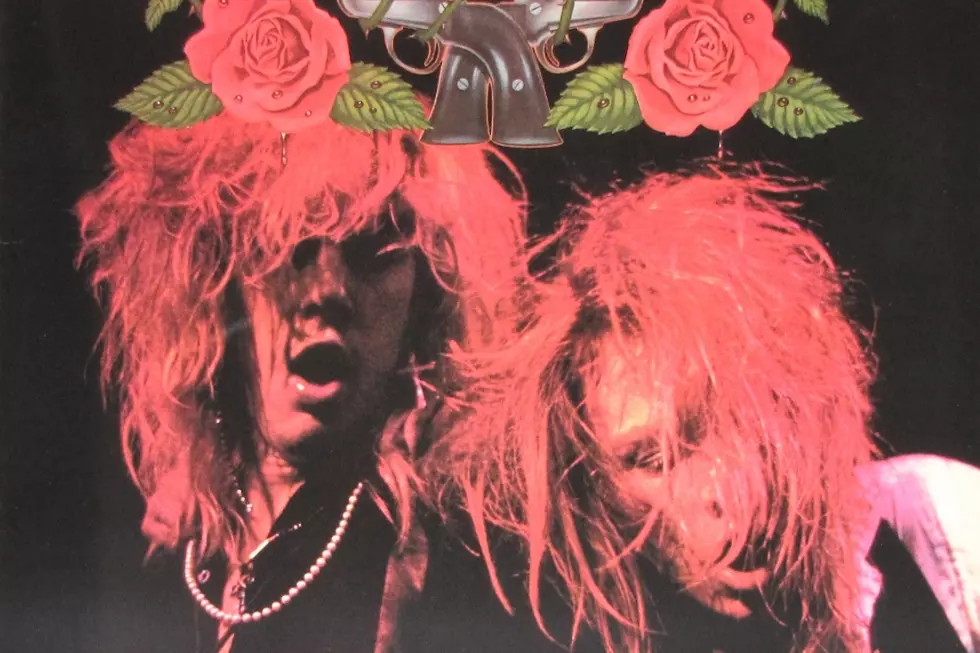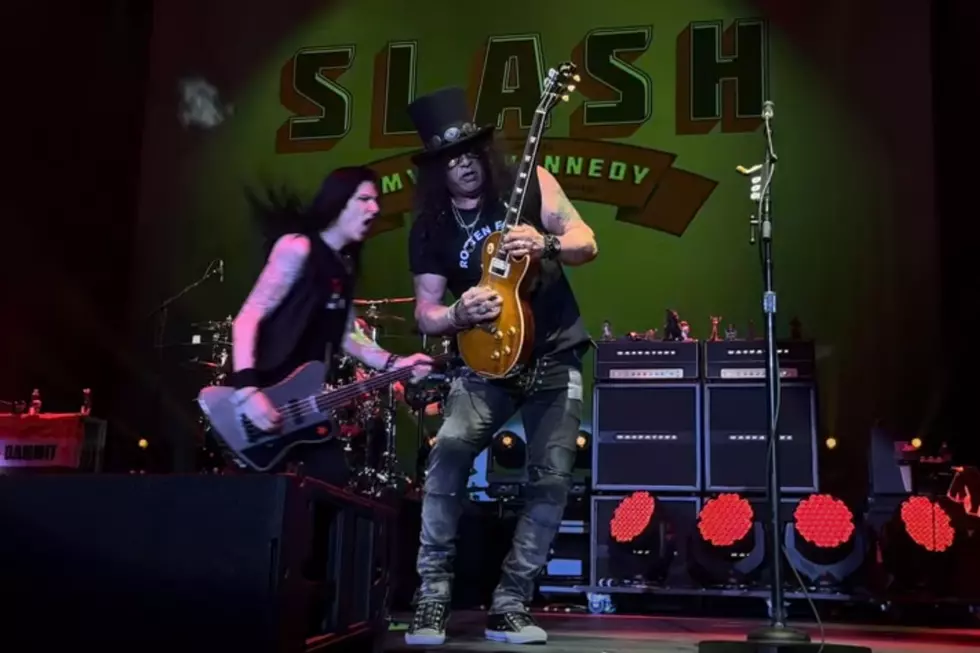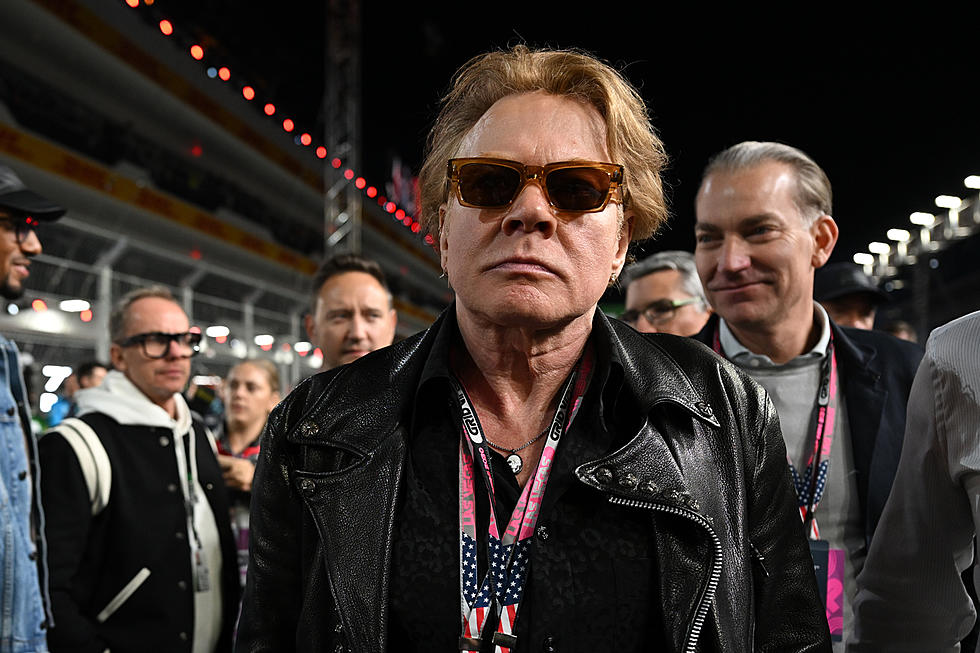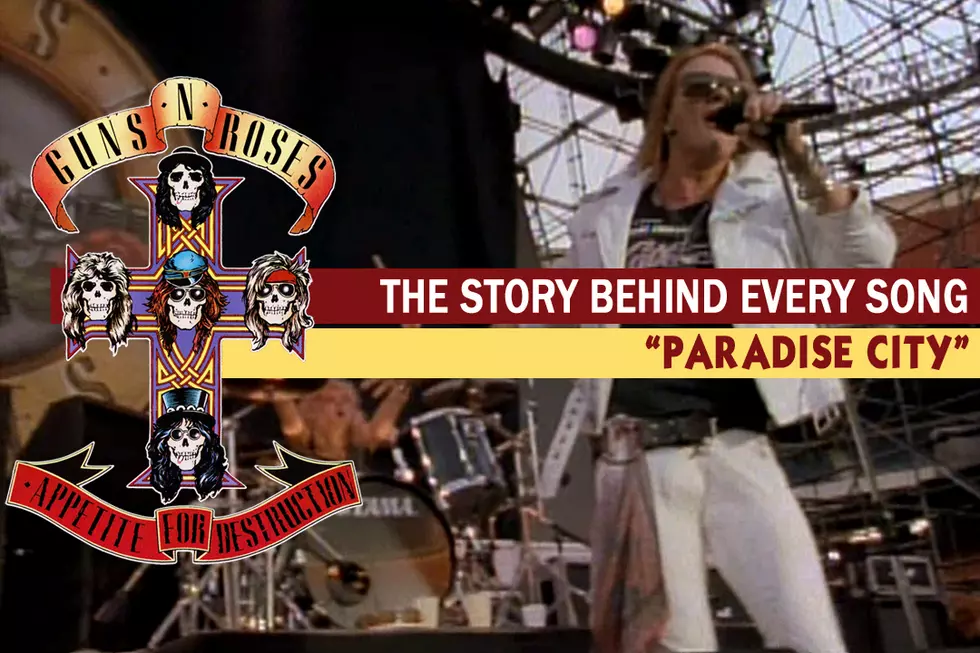
Why Guns N’ Roses’ ‘Live ?!*@ Like a Suicide’ Wasn’t Really Live
Legend tells us that Guns N' Roses began their march toward global domination with 1987's era-defining Appetite for Destruction, home to "Welcome to the Jungle," "Sweet Child O' Mine," "Paradise City," and other now-classic songs.
Just a few months earlier, however, the L.A. quintet actually released a bite-sized taster of things to come called Live ?!*@ Like a Suicide. The four-track EP, which arrived on Dec. 16, 1986, was said to have captured Guns N' Roses in concert. But did it?
Since signing their deal with Geffen Records, Axl Rose (vocals), Slash (lead guitar), Izzy Stradlin (rhythm guitar), Duff McKagan (bass) and Steven Adler (drums) had been searching for a manager (eventually settling on Alan Niven) as well as producers to helm recordings for their still-germinating debut album.
At one point, Guns N' Roses recorded a slew of demos at the famous Sound City Studios with Nazareth guitarist Manny Charlton overseeing proceedings; a little later they linked up with Spencer Proffer (W.A.S.P., Quiet Riot, Tina Turner) at Pasha Studios in Hollywood. Progress was slow, and Geffen was losing its patience.
The newly appointed Niven came up with a solution to this dilemma, according to Slash's autobiography. "[Alan] thought it was essential for us to get some product out while we still had a strong buzz in the industry; it would keep the excitement alive while we recorded our full-length album," the guitarist wrote.
Listen to Guns N' Roses Perform 'Reckless Life'
Guns N' Roses decided to release an EP on a Geffen-financed imprint of their own invention. "It would appear to be a 'live EP' on an 'indie' label but in truth it wouldn't be either," Slash continued. "We called the label Uzi Suicide and the EP ... was untouched demos of four songs we'd been playing since our first rehearsal: Aerosmith's 'Mama Kin,' Rose Tattoo's 'Nice Boys' and two of our own, 'Move to the City' and 'Reckless Life.'"
Even back then, there were clues that the results weren't actually recorded live – beginning with the full-fledged horn section blaring away throughout "Move to the City." Then there was the "?!*@" strategically placed within the EP's title. So, how did Guns N' Roses get the audience reaction? McKagan later explained that the crowd noise was swiped from the Texxas Jam, the famous '70s mega-festival.
"We thought it would be funny to put a huge stadium crowd in the background," he wrote in his autobiography It's So Easy, "at a time when we were lucky to be playing to a few hundred."
Live ?!*@ Like a Suicide was subsequently pressed up and released in a limited run of some 10,000 vinyl and cassette copies. Most future Guns n' Roses fans wouldn't even know of its existence until two years later, when these four songs were reissued in combination with four other acoustic tracks as G N' R Lies.
Of course, once new recordings from Guns n' Roses became less frequent than sightings of the Loch Ness Monster, Live ?!*@ Like a Suicide became increasingly prized by collectors. What they discovered was a group of early songs that, despite the tacked-on audience, still very much hold up. "They're raw, I guess," Slash concluded in his autobiography, "but if you ask me they still sound pretty fucking good."
Guns N' Roses Lineup Changes: A Complete Guide (We Think)
Dizzy Reed's Real-Life 'Spinal Tap' Moment
More From Ultimate Classic Rock









